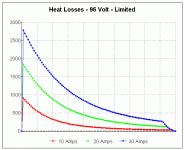safe
1 GW
- Joined
- Dec 22, 2006
- Messages
- 5,681
Overvolting
 Overvolting is generally a good thing to do.
Overvolting is generally a good thing to do.
However, there are some problems that occur that need to be looked at so that people don't try to overvolt with disastrous consequences. In order to improve the presentation "experience" I'm going to load all the charts here first and then reference them as I go.
However, there are some problems that occur that need to be looked at so that people don't try to overvolt with disastrous consequences. In order to improve the presentation "experience" I'm going to load all the charts here first and then reference them as I go.












